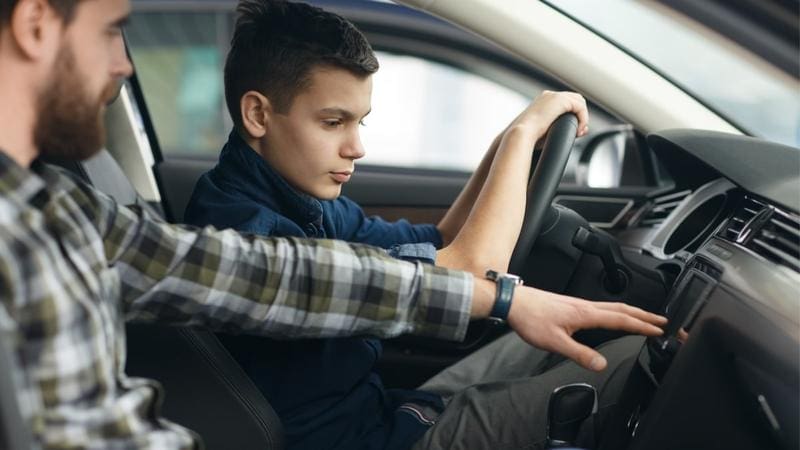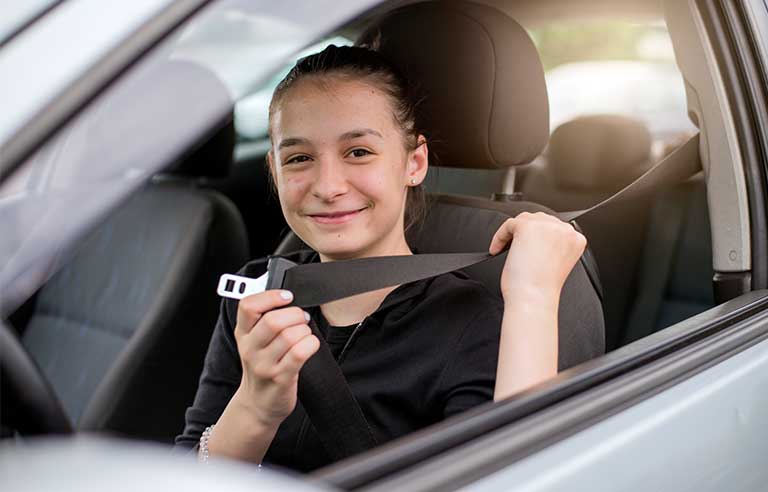In Canada, there were more than 35.74 million motor vehicles registered in 2019 alone. Of these, light road vehicles, such as cars and SUVs, accounted for two-thirds (or 23.47 million). Only licensed motorists can operate these registered vehicles. With that said, you must hold the proper license type before you can even operate a vehicle in Canada. It depends on the province or territory, but most of them issue at least seven to eight license types. Of these, a class 7 license is what most new drivers need to drive a car legally. So, what exactly is this class 7 driver's license in Canada, and which vehicle can you drive with it? What restrictions does it place on driving privileges? Installing a GPS Tracker for a car can be an excellent way to keep track of your newly teen driver’s whereabouts and ensure their safety on the road. We'll give you all the answers to those questions in this guide, so be sure to read on!
What Exactly Is a Canadian Driver's Class 7 License?
Depending on which part of the country you live in, a class 7 license may either be a learner's or novice's permit. It's the first type of license that most young and first-time motorists usually need to apply for. New drivers as young as 14 to 16 years old can already obtain this specific license type.
Obtaining a class 7 driver's license starts with reaching out to a registry agent near you. Registry agents are facilities offering licensing and registration services in Canada. They administer the tests required when applying for a driver's license.
Which Provinces or Territories Issue a Class 7 Driver's License?
Six Canadian provinces issue a class 7 license. These include Alberta, British Columbia, New Brunswick, Nova Scotia, Prince Edward, and Saskatchewan. The same goes for all three territories (Northwest Territories, Nunavut, and Yukon).
Newfoundland and Labrador used to issue this learner's/novice's license, too. However, the province phased it out in January 2002. The Class 5I Novice Driver permit replaced its class 7 license.
Ontario doesn't issue class 7 driver's licenses, but it has a similar learner's permit. In fact, the province has two under its Graduated Licensing Process: the G1 and G2 driver's license. These two are pretty much the equivalent of the class 7 license in Ontario.
Class 7 Driver's License in Alberta
Alberta's Graduated Driver's Licensing program is open to applicants aged 14 or older.
Under the law, all new drivers in Alberta need to start with a class 7 license regardless of their actual age. Obtaining this requires the successful passing of a vision test and a knowledge exam. Applicants under the age of 18 must also have parental consent to apply for a class 7 license.
You can use a class 7 driver's license to start the vehicle registration process in Alberta. You can also drive the same types of vehicles that a Class 5 DL holder can. Moreover, you can operate a motorcycle and a moped with the learner's license.
However, as a class 7 DL holder, you can only drive with a non-probationary license holder. The fully licensed driver must sit right beside you in the front passenger seat. Alberta also has zero blood alcohol content restriction for class 7 licensees.
Class 7 Driver's License in British Columbia (BC)
If you're at least 16 years old, you can begin your BC Graduation Licensing Program. However, you must obtain your parent's consent first if you're under 19.
The class 7 DL in BC comes in two types: the learner's (L) license and the novice (N) license. To get the L license, you need to pass a knowledge test and a vision screening exam. After one year, you can then take the class 7 road test to get your N license.
As a class 7 licensee, you can drive cars, vans, light trucks, and 2-axle utility vehicles. However, you can only do so if accompanied by a fully licensed (class 5) driver. BC also has strict restrictions on zero blood alcohol and blood drug concentration.
Class 7 Driver's License in New Brunswick (NB)
New Brunswick lets teens at least 16 years old start their GLP with parental consent (under 18 years old). Qualifications also include vision, written, and sign tests.
As with BC, there are also two types of class 7 DLs in New Brunswick: level 1 and level 2.
Level 1 license holders can only operate a vehicle if with a fully licensed driver. They can't drive between midnight and 5:00 AM, either. So long as they meet these rules, they can operate the same vehicles class 5 license holders can.
Level 2 licensees can drive without a fully licensed driver, but only during the day. Except for work or school exceptions, the night-time supervised driving rule still applies.
Class 7 Driver's License in Nova Scotia (NS)
In Nova Scotia, the class 7 driver's license is one of the two types of learner's licenses. The other, referred to as "class LM," is for new motorcycle operators.
The minimum age requirement is 16, and anyone under 18 must have their parent's consent. Passing knowledge and vision tests are part of the qualifications.
With a class 7 driver's license, you can operate sedans, pick-up trucks, SUVs, and vans. However, it's only legal if no other passenger except the supervising driver is in the car. New Brunswick also enforces strict zero blood alcohol level restrictions.
Class 7 Driver's License in Prince Edward Island (PEI)
In Prince Edward Island (PEI), a class 7 license is also known as an instruction driver's permit. With this, you can drive a motor vehicle, motorcycle, or moped. However, a fully licensed driver must always be in the vehicle, right beside you.
PEI grants issues class 7 licenses to applicants as young as 16 years old. To obtain the license, one must pass a written exam first.
Aside from the driving supervisor, only the class 7 licensee's immediate family can be in the car. All allowed passengers must be wearing seatbelts at all times. The driver must have zero blood alcohol content, while the supervising driver can only have up to 0.05%.
Class 7 Driver's License in Saskatchewan
In Saskatchewan, a class 7 driver's license applicant must be at least 15 years old. Applicants under 19 must provide written parental content. They must also complete basic and sign knowledge tests to acquire the class 7 DL.
A Saskatchewan class 7 license allows you to drive any vehicle that a class 5 license holder can. You'd still need to have a driver with a class 5 license (or greater) supervising you, though. The supervising driver must always occupy the front passenger seat.
Do note that it's illegal for class 7 DL holders to have a blood alcohol concentration of more than 0.0%. There are also night-time passenger restrictions between midnight and 5 AM. In this case, only the supervising driver and immediate family members can be in the vehicle.
Class 7 Driver's License in Northwest Territories (NWT)
The minimum age to get a class 7 driver's license in the Northwest Territories is 15 years old. There are also vision screening and knowledge exams that an applicant must pass.
Class 7 DL holders can operate vehicles permitted for class 5 license holders. However, a class 5 licensee with at least 24 months of class 5 driving experience must be with them at all times. There are also night-time and blood alcohol concentration restrictions for class 7 licensees.
Class 7 Driver's License in Nunavut
Nunavut issues class 7 driver's licenses to applicants who are at least 15 years old. They must pass a written test, a vision screening, and a road knowledge exam.
Nunavut's Class 7 DL holders can operate cars, small 2-axle trucks, and motorcycles. As always, there must be a fully licensed driver in the vehicle at all times. There are also blood alcohol concentration and night-time restrictions.
Class 7 Driver's License in Yukon
In Yukon, the Graduated Driver Licensing Program is open to applicants at least 15 years old. Parental consent is mandatory for anyone under 18 years old. Applicants must also complete and pass a written test and a vision exam.
Yukon's GLP comes in two levels: the learner and the novice stages. If you qualify for the learner stage, you will get a class 7 license. After six months of being a class 7 DL holder, you can then advance to the novice class 5 stage.
The class 5 stage is still part of the GLP, though. As such, you need to complete both the learner and novice stage to obtain a full driver's license.
As for what you can drive with a class 7 license, it can be any vehicle with a gross weight of 4,000 KG or less. However, you can only legally drive them without passengers, except the supervising driver.
Get the Coverage You Want at the Best Rates
Get quotes in minutes and save on the best insurance policies.
Get QuotesPrepare to Get Your Class 7 License Now
As you can see, a class 7 license differs from one Canadian province or territory to another. However, the primary similarity is that it's the first type of license given to young and new drivers. Anyone new to driving in the Great White North must start with this specific license type.
Once you have a class 7 license, you can start the vehicle registration process. This, in turn, requires a valid auto insurance policy.
Don't worry, as our team here at Insurdinary can help you find the best car insurance policy. Simply fill out this form so we can give you the best offers and quotes!










